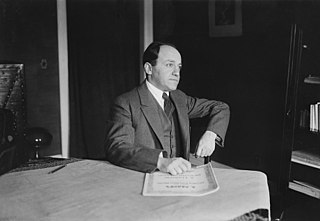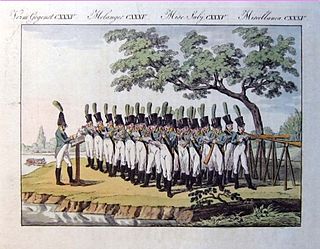Related Research Articles
Gustave Reese was an American musicologist and teacher. Reese is known mainly for his work on medieval and Renaissance music, particularly with his two publications Music in the Middle Ages (1940) and Music in the Renaissance (1954); these two books remain the standard reference works for these two eras, with complete and precise bibliographical material, allowing for almost every piece of music mentioned to be traced back to a primary source.
Manfred Fritz Bukofzer was a German-born American musicologist.
Antonio Russolo (1877–1943) was an Italian Futurist composer and the brother of the more famous Futurist painter, composer and theorist Luigi Russolo. He is noted for composing pieces made with the intonarumori and, together with his brother, introduced The Art of Noises.

Harold Courlander was an American novelist, folklorist, and anthropologist and an expert in the study of Haitian life. The author of 35 books and plays and numerous scholarly articles, Courlander specialized in the study of African, Caribbean, Afro-American, and Native American cultures. He took a special interest in oral literature, cults, and Afro-American cultural connections with Africa.
Carl Engel was a French-born American pianist, composer, musicologist and publisher from Paris. He was also president of G. Schirmer, Inc., a writer on music for The Musical Quarterly, and chief of the Music Division of the Library of Congress.

Il teatro alla moda is a satirical pamphlet in which its author, the Venetian composer Benedetto Marcello (1686–1739), vents his critical opinions on the milieu of the Italian opera seria in the first decades of the eighteenth century. It was first published anonymously in Venice, by the end of 1720. Virtually every aspect of opera seria and its social environment is mercilessly criticized by Marcello: the artificiality of plots, the stereotyped format of music, the extravagant scenography and machinery, the inability and venality of composers and poets, the vanity and vulgarity of singers, the avidity of impresarios, the ineptitude of musicians.

The word boula can refer to at least four different drums played in the Caribbean music area.

Macbeth is an opera in three acts, with music by Ernest Bloch to a libretto by Edmond Fleg, after the eponymous play of William Shakespeare. Bloch composed the opera between 1904 and 1906, but it did not receive its first performance until 30 November 1910 by the Opéra-Comique in Paris with Henri Albers in the title role and conducted by François Ruhlmann. Alex Cohen has written of quarrels within the cast that contributed to the opera's poorly received premiere.

Jubal is a biblical figure in Genesis 4:21 of the Hebrew Bible and Old Testament. Mentioned only once, he is sometimes regarded by Christians, particularly by medieval commentators, as the 'inventor of music'. A descendant of Cain, his father is Lamech and his brother is Jabal.

The rajão is a 5-stringed instrument from Madeira, Portugal. The instrument traces back to the country's regional folk music, where it is used in folklore dances of Portugal in addition to other stringed instruments from the same region.
Ernst Thomas Ferand was an American musicologist and music educator of Hungarian birth. He was also known as Ernest Ferand and Ernst Ferand-Freund.
Tahona, alternatively spelled tajona due to its pronunciation or taona, is a secular style of Afro-Cuban music developed in the 19th century in Santiago de Cuba after the arrival of Haitian slaves following the Haitian Revolution. It is named after the ensembles and the drums played by them. It is considered one of the oldest styles within the rumba complex, and its performance became rare by the 20th century.

Vaccine are rudimentary single-note trumpets found in Haiti and, to a lesser extent, the Dominican Republic as well as Jamaica. They consist of a simple tube, usually bamboo, with a mouthpiece at one end.
Mark Swed is an American music critic who specializes in classical music. Since 1996 he has been the chief classical music critic of the Los Angeles Times where his writings have made him a two-time finalist for the Pulitzer Prize for Criticism. Prior to his LA Times post, Swed was the chief music critic for the Los Angeles Herald Examiner and The Wall Street Journal, and has contributed other writings to a variety of publications including The Orchestra, an iPad application. He has a particular interest in contemporary classical music.

The Russian horn orchestra flourished as a distinct music genre in 18th and 19th century Russia. It was a coordinated performance using hunting horns known as Rozhoks, each of which could produce only one specific sound.
References
- Manuel, Peter (1988). Popular Musics of the Non-Western World: An Introductory Survey . New York: Oxford University Press. ISBN 0-19-506334-1.